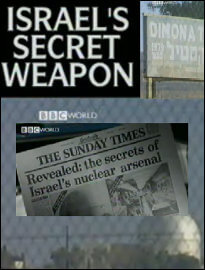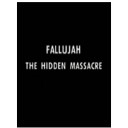The Red Line
Chemical warfare constitutes one of the ugliest and most fearful threats of our modern world. But the means to produce mass casualties through the use of poisonous substances has been a reality for many generations. The Red Line traces the history of chemical weaponry from the battlefields of World War I to our present day war on terror.
Insidious poisonings had long been a tactic of attack among political rivals, but chemical weapons didn't take center stage until 1915. That's when Fritz Haber, a Nobel prize winning chemist, was tasked with putting an end to the trench warfare that had claimed many German lives during the First World War. His solution came in the form of chlorine bombs. Once employed, these bombs could annihilate up to 5000 troops in minutes, and many more in the lingering and painful wake of exposure. A new era of industrialized warfare was born.
These despicable weapons evoked fear and disgust amongst nations and the public at large, and were later banned for use as killing agents by the Geneva Protocol of 1925. However, several nations continued to experiment with various forms of nerve gas - including VX, mustard and sarin - and worked to circumvent this international agreement. For example, Agent Orange was initially employed in southeast Asia for its effectiveness in clearing dense jungle foliage during the Vietnam War. Its long-term impact on humans was either not taken into account or viewed as an acceptable repercussion.
While the world leaders of today continue to look upon these weapons as a vile alternative to traditional combat, they continue to pose a massive threat to a growing number of military and civilian populations. For the most bloodthirsty of terrorist organizations, they facilitate a position of extreme influence and strength. Even civilized nations and governments look upon them as a bargaining chip of sorts. They know that by possessing these weapons, they have the power to either thwart the escalation of conflict or create a level of death and destruction unseen in human history.
Clocking in at just under two hours, The Red Line is an exhaustive investigation into the history of chemical weaponry, and a sobering portrait of the inhumanity of war.
Directed by: Graham Templeton




The chemical attacks by Syria on it's own people is wrong. Graham is showing White Helmet videos which have been debunked by many journalists as terrorist propaganda videos. Also, Graham doesn't mention the stock pile of missing sarin gas weapons going missing after the West's regime change in Libya, soon before all of the 2012 sarin attacks Graham speaks about in his video. It is not a civil war in Syria, but a regime change scenario backed by corporate interests of western companies and allies of Saudi Arabia, UAE, and Quatar to put in oil and gas pipelines through Syria which Assad said no to. He, Assad and his government, were working with Iran to put in a pipeline of their own. The 'rebels' are terrorists armed, backed, funded, and supported by America and the West along with the before mentioned countries. I suggest looking into George Webb's research into this. Webb's work in documented on his web site and you tube channel. Also, check out crowd source the truth's page on face book on these matters. Plus I see Graham refers to all alternative news sites as radicals and not so for the MSM. Why is this? I lastly suggest Eva Barlett's work on Syria, since she was there many times during this time as well as in Palestine. It would have been nice if Graham had mentioned her by name as one of the journalists on the ground in Syria.
A great look at one of the most serious issues of our time. I love Graham's work.
What has killed far more people than chemical weapons are the financial and banking systems. And all in the name of greed.